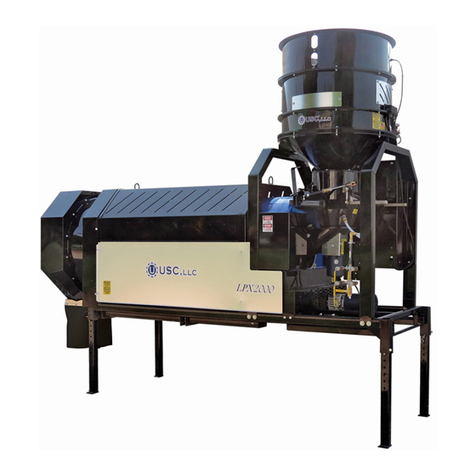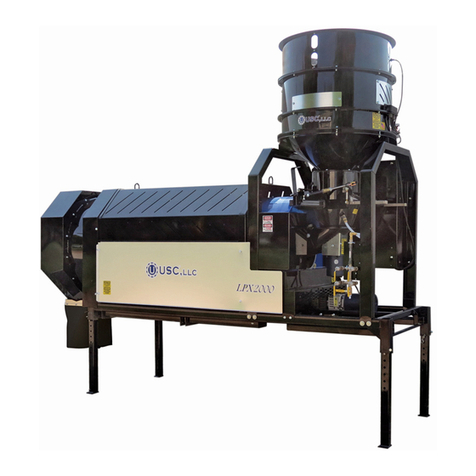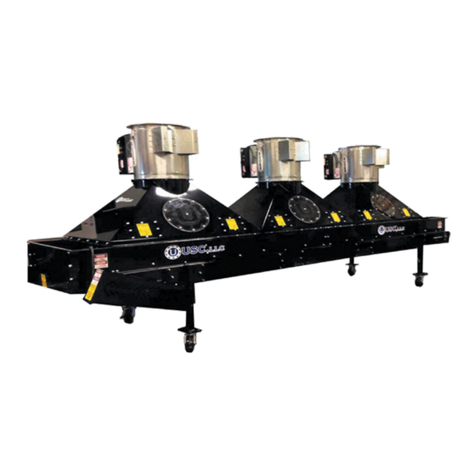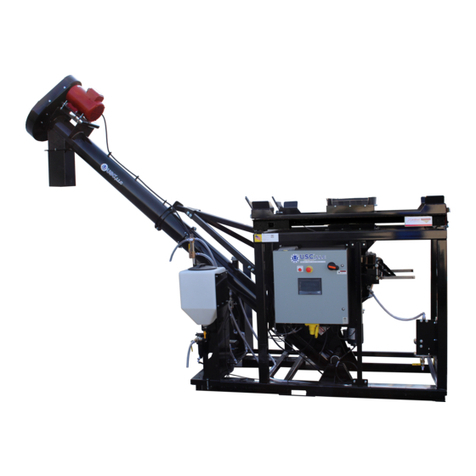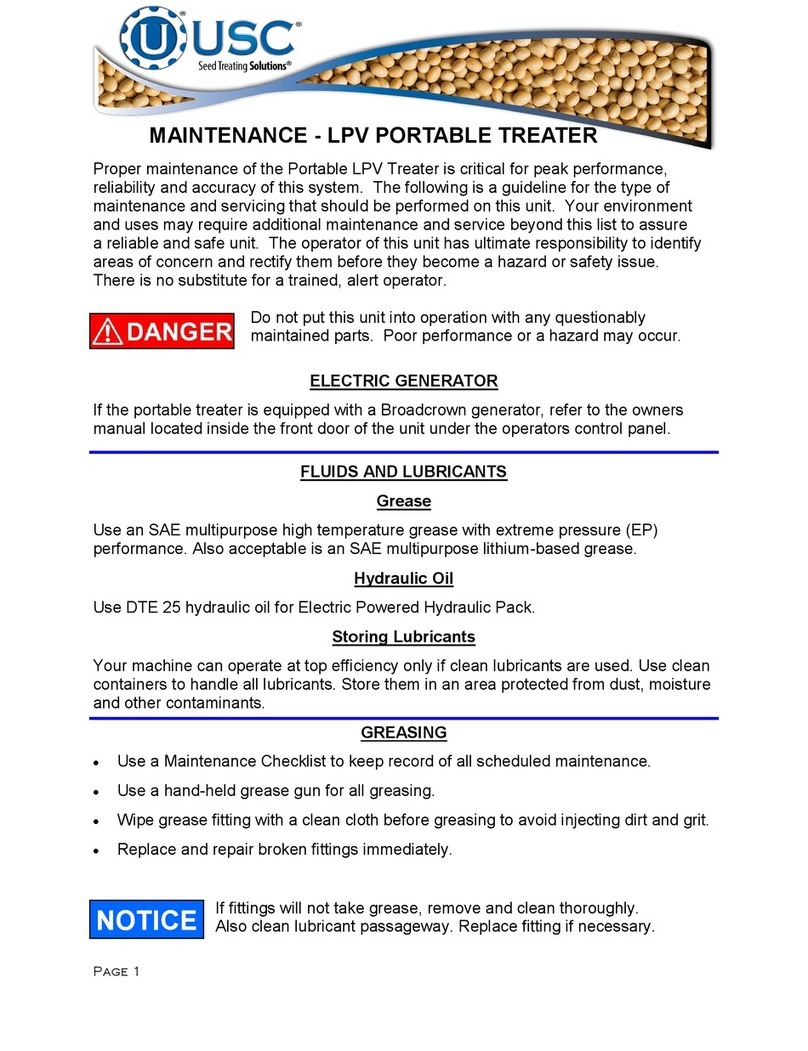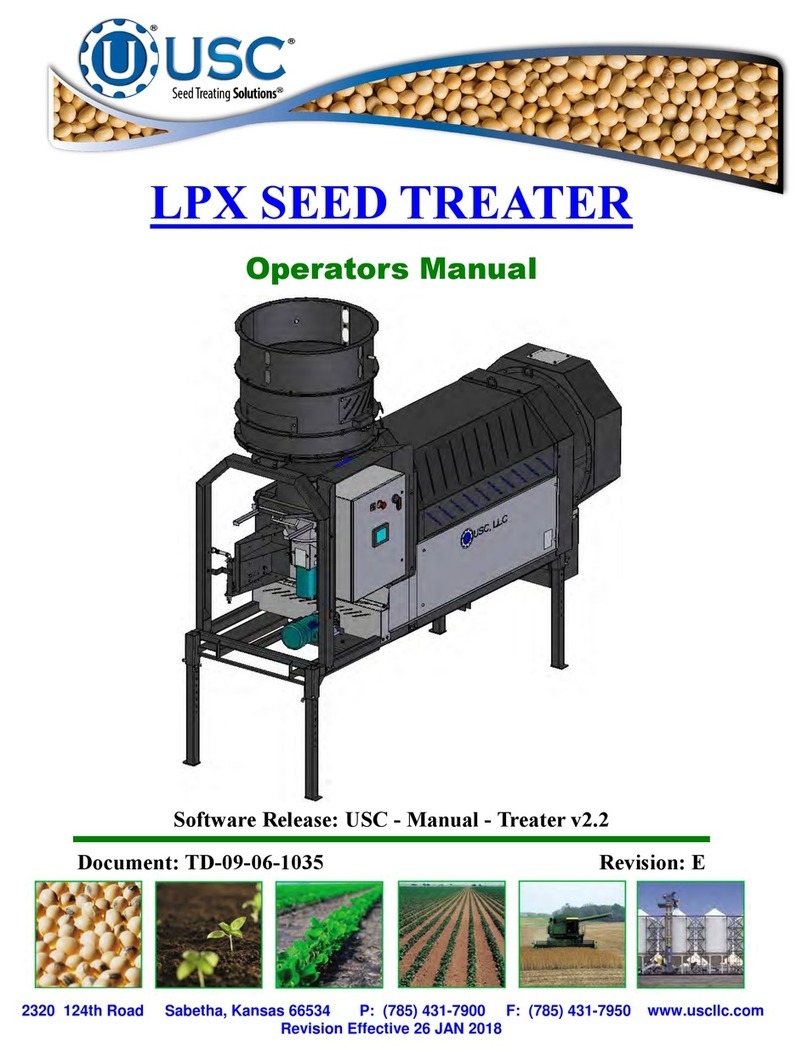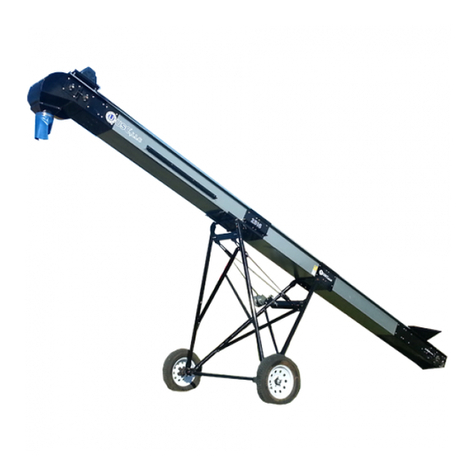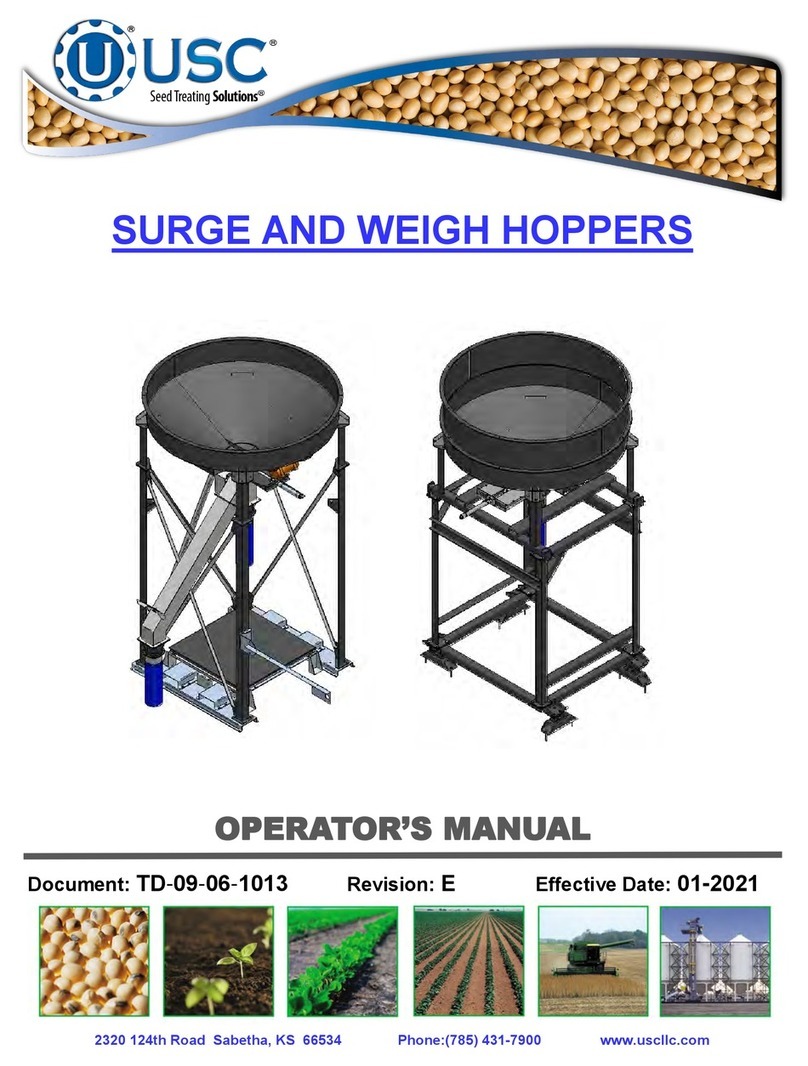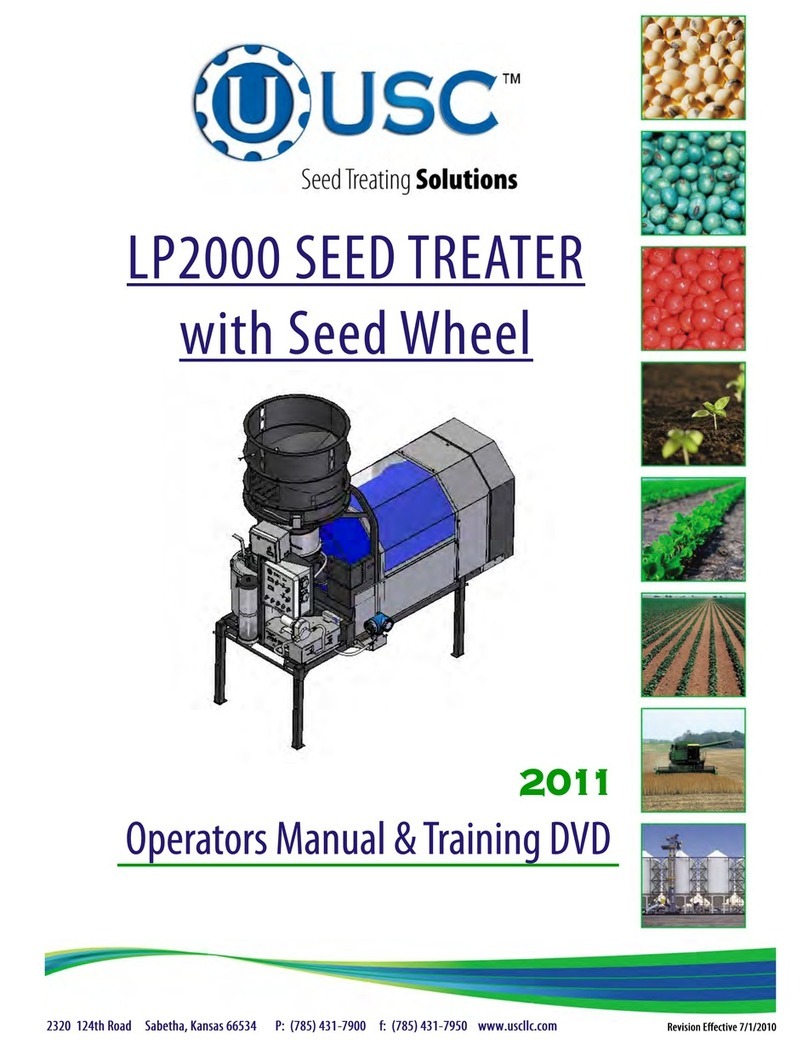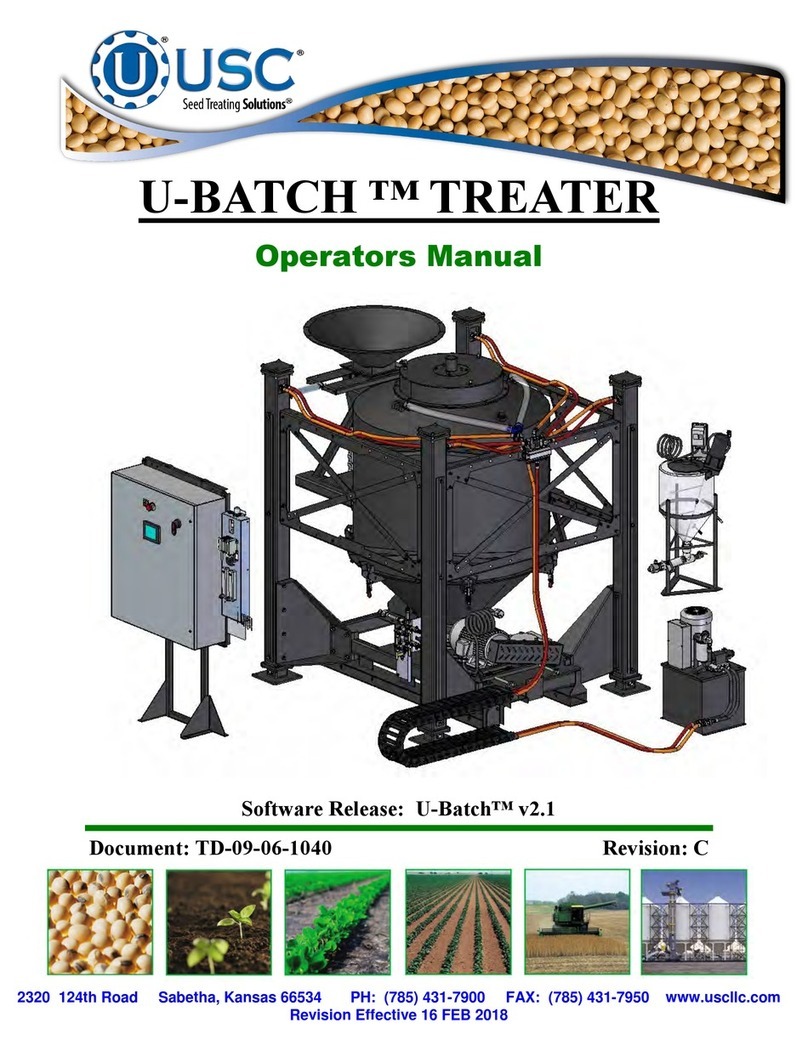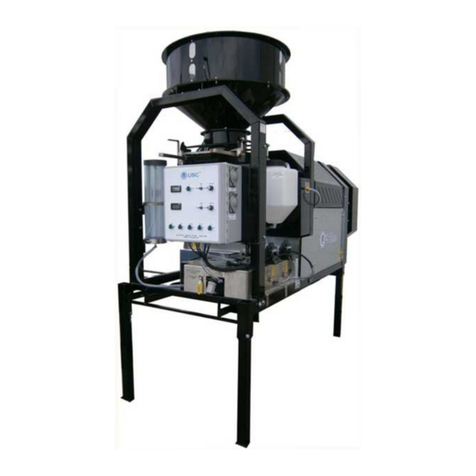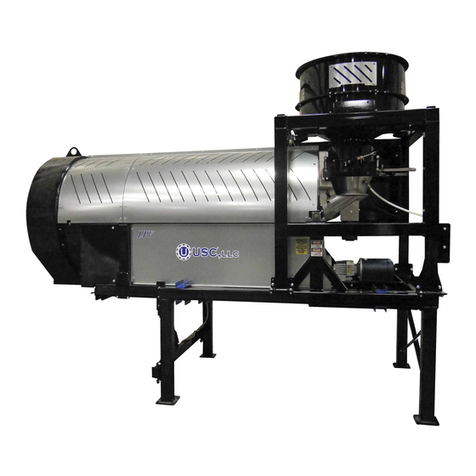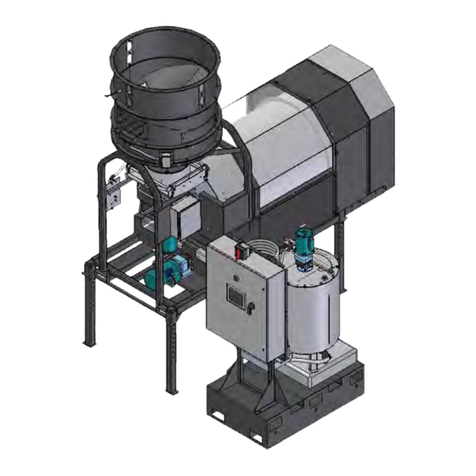Page 3
AT500H TREATER
Section Contents Page #
Section A Safety Instructions................................................................. 4
Safety Labels ......................................................................... 11
Section B Installation ............................................................................ 14
Main Control Panel Connections............................................ 16
Section C Mechanical Operation.......................................................... 18
AT500H Automated Treater Overview ................................... 18
Loss In Weight Slide Gate and Atomizer Overview ................ 19
Peristaltic Pump Head and Motor........................................... 20
Seed Treatment Valves.......................................................... 21
Flow Meters............................................................................ 22
Section D Electrical Operation ............................................................. 23
Main Screen ........................................................................... 24
H-O-A Screen......................................................................... 28
Profile Editing Screens........................................................... 32
Reports Screen ...................................................................... 33
Customers.............................................................................. 34
Ingredients ............................................................................. 35
Seed Profiles.......................................................................... 36
Recipes .................................................................................. 37
Events Screen........................................................................ 38
Section E Calibration & Operation....................................................... 39
Load Cell Calibration.............................................................. 39
Seed Flow Calibration ............................................................ 41
Flow Meter Calibration ........................................................... 43
Treating seed ......................................................................... 45
Section F Troubleshooting................................................................... 48
Proximity Sensor Adjustment Guide....................................... 51
Section G Maintenance ......................................................................... 52
Atomizer ................................................................................. 53
Belt Tensioning and Alignment............................................... 54
Belt Tensioning Specification ................................................. 55
Pumps—Plumbing-Flow Meter............................................... 56
Section H Storage.................................................................................. 58
Section I Limited Warranty.................................................................. 61
Table of Contents


